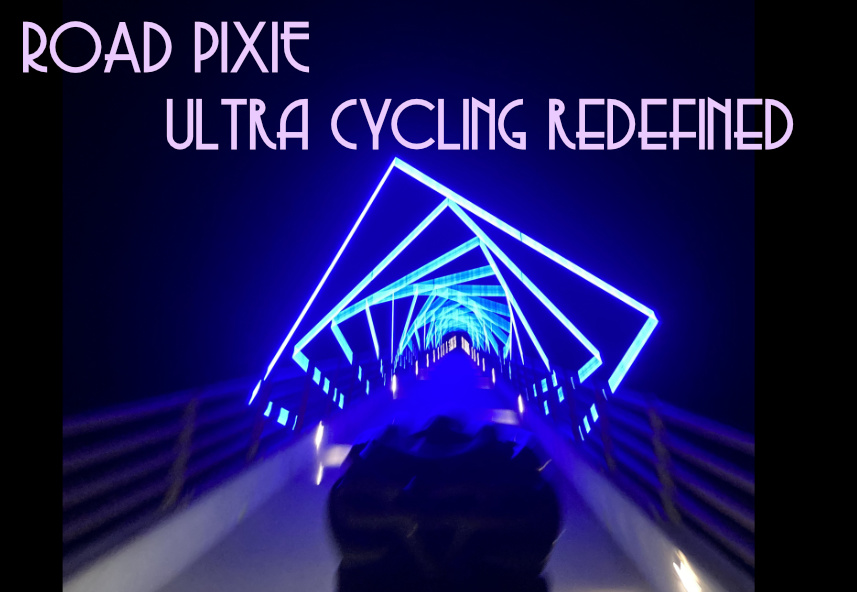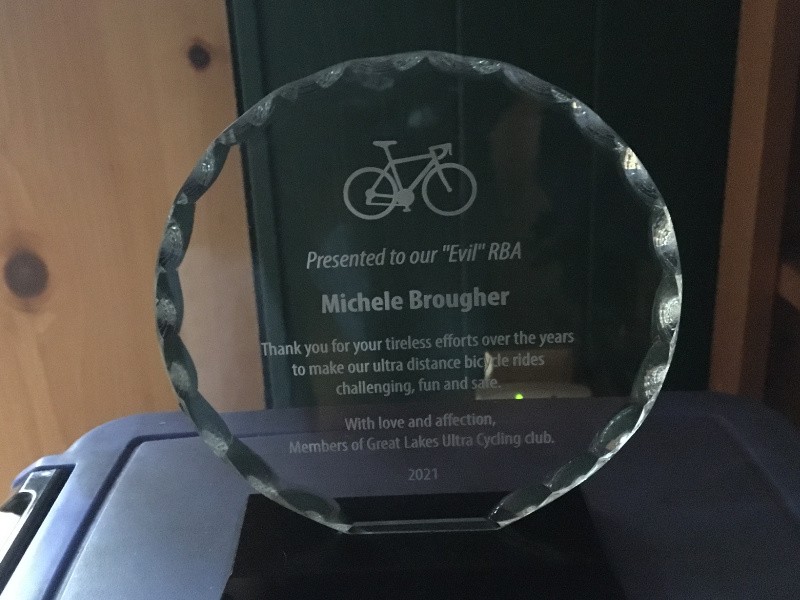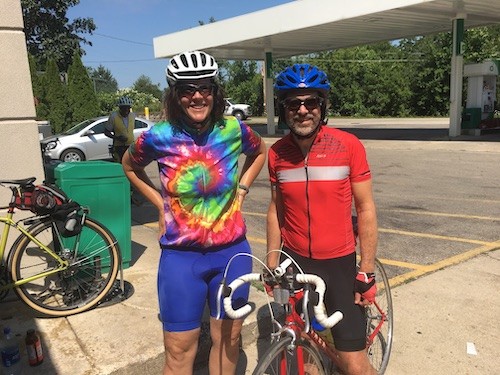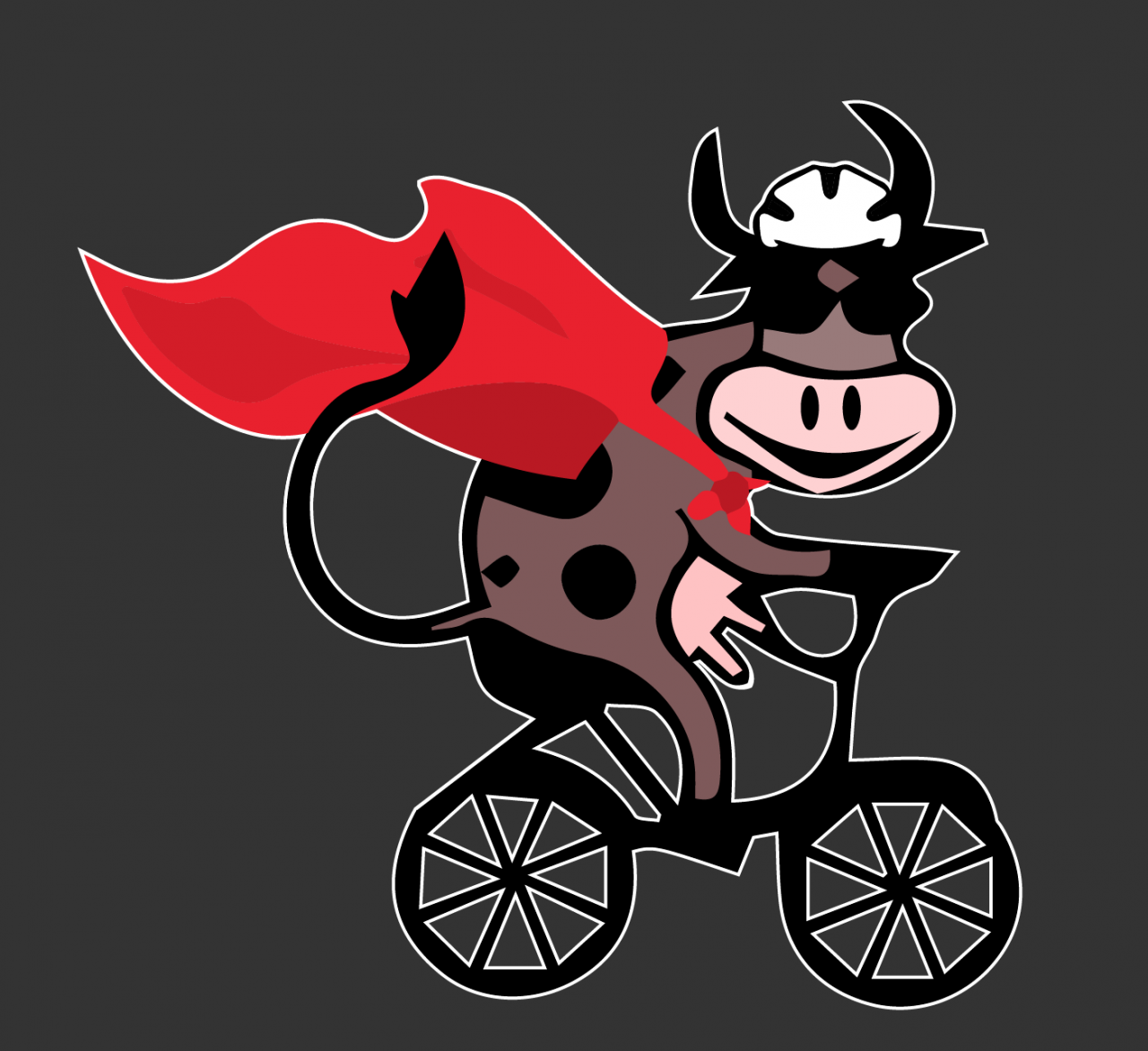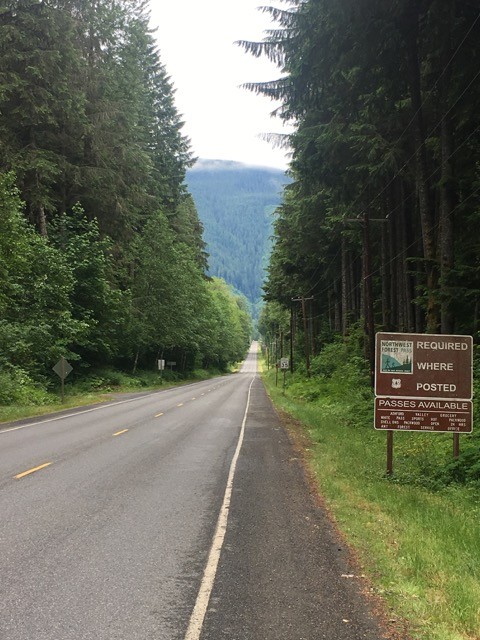Recent events have had me researching and there really isn't much out there on picking a good winter route or knowing when to ride. After many years of winter cycling and some very close shaves, I thought this might help fill a needed gap.
None of these recommendations are based on non-continuous conditions; when I say, avoid roads that are narrowed or full of snow, it means the majority of the distance traveled on the road, not for intermittent problems. A block of some bad thing is one thing, riding with it for miles is something else.
None of these recommendations are based on non-continuous conditions; when I say, avoid roads that are narrowed or full of snow, it means the majority of the distance traveled on the road, not for intermittent problems. A block of some bad thing is one thing, riding with it for miles is something else.
I've ridden 200ks in some horrendous conditions. That doesn't make me brave, it makes me stupid. I write these so that less people will be in the stupid club with me.
1. Road Conditions
This is the number one issue hands down. Some roads are just better than others in the winter. If your area has heavy snow, then there is a tendency for roads to narrow as the winter goes on because snow piles start to creep onto the street and shoulders disappear under layers of ice, grime and snow. Hardpack snow, ice and grime can also either cover potholes, cracks and other defects or make it very difficult to do emergency avoidance. When deciding where to ride, pick roads that are well-maintained, newer and have good drainage. Though it might seem like small, rural roads would be idea because of less traffic that can be a bad assumption if they are not maintained or are not plowed to the pavement frequently. Roads that are not plowed to the pavement should be avoided and it is vital to be able to know where the yellow line is. Beware of the phenomena called wheel-track icing. Small amounts of snow are melted by the relative "heat" and friction of cars passing over causing layers of super-slick ice to form. If you fall in the middle of the road in traffic, odds are very high you may get hit by a passing car. Another hazard to using ruts or marks is that snowmobilers frequently leave mock trail on the sides of the roads - riding on a snow mobile trail may be dangerous in loose snow or if you don't have really fat tires (like 3-4").
Always prefer roads that plow the shoulder and keep it clean, if you can't get over, then traffic becomes a big problem. Even if the shoulder cannot be ridden, it is vital that it be obvious where both it is and where the edge of the road is. Rural areas frequently have blowing snow that will fill ditches and spread over the road shoulder like a blanket making it impossible to say where the road ends and the ditch begins. Even if there is really light traffic, these roads are extremely dangerous because you cannot confidently move over to allow traffic to pass. This doesn't mean that you have to see the edge all the time, if say, 20 ft was obscured but it was evident enough to estimate, thing are fine. If there are long stretches of road with obscured edges, the road is simply not safe for cycling. Again estimating from tire ruts is not a good alternative since those are guesses made by local motorists, if you have to exit the rut to allow a car to pass, you can have a severe accident. The same goes for roads that have so much snow that you cannot see either the white or yellow lines within your field of vision for more than a couple of minutes.
Roads deteriorate during the month of January due to the gradual build up of road grime and snow and deep cold. December riding is much easier since snow will be relatively fresh and there will be less on the side of the road. Get experience riding on roads in December if you intend to try January. Also, find some way to ride in snow before trying a long route. Try out your setup on an unploughed side street or a lesser maintained bike trail so that you really have a feel for winter handling.
Roads deteriorate during the month of January due to the gradual build up of road grime and snow and deep cold. December riding is much easier since snow will be relatively fresh and there will be less on the side of the road. Get experience riding on roads in December if you intend to try January. Also, find some way to ride in snow before trying a long route. Try out your setup on an unploughed side street or a lesser maintained bike trail so that you really have a feel for winter handling.
2. Snow and visibility
Night riding in the snow may be one of the most dangerous activities a cyclist can engage in. If any part of a route is to be during evening hours on a road, really good lights, reflective gear on moving body parts (like calves or feet) are a must. Rear LED blinkers suitable in summer are probably inadequate for winter riding if light snow is present. Experiment by walking away from your bike a night on a dark sidewalk during various condition; you always want at least a quarter mile of visibility for your rear light in any conditions you intend to ride in.
On the subject of snow, it's dangerous even in tiny amounts. If even light snow if falling or blowing at night, avoid riding period or ride on a dedicated bike trail or side streets to avoid traffic. Cars may need to cross through piles of snow in the middle of the street to pass you increasing the chances of a spinout. Needless to say, anything that increase the chances of a car accident will increase the caution that must be taken if cars are present.
Hardpack snow on the road will magnify the amount of effort it takes to pedal. A headwind that causes little issue in summer can become a real trial if you are on snow. A 10 mph wind will feel like a 15-20 mph wind on snowy or slippery pavement. Descents can become treacherous on hardpack as well so be prepared to ride about 30% slower than usual on hardpack.
On the subject of snow, it's dangerous even in tiny amounts. If even light snow if falling or blowing at night, avoid riding period or ride on a dedicated bike trail or side streets to avoid traffic. Cars may need to cross through piles of snow in the middle of the street to pass you increasing the chances of a spinout. Needless to say, anything that increase the chances of a car accident will increase the caution that must be taken if cars are present.
Hardpack snow on the road will magnify the amount of effort it takes to pedal. A headwind that causes little issue in summer can become a real trial if you are on snow. A 10 mph wind will feel like a 15-20 mph wind on snowy or slippery pavement. Descents can become treacherous on hardpack as well so be prepared to ride about 30% slower than usual on hardpack.
3. Traffic
Cars on roads in the winter have many more challenges than in the summer or spring. The number of cars in the ditch after an inch of powder is a good example. One might interpret from this that the best roads would be low traffic country roads. From a traffic perspective that is true. However, that can come into conflict with some of the other requirements, so perhaps a better piece of advice is that roads that have decent passing options for cars are preferable. This means favoring moderately used boulevards with lower speed limits and multiple lanes per direction. In urban areas, this can include roads that are extra wide to provide parking options so long as the ride gets timed to coincide with times when cars tend not to be parked. Many city streets are like this because people go to work in the day, leaving the residential street empty.4. Alternate routes and plans
If you are planning a long ride, it is very wise to find as many alternate routes as possible so that if a road is unsafe, you can find another. This may mean advanced planning or bringing some kind of map or GPS. Scout out the route ahead of time, if possible, and identify places that are likely to become troublesome and get an alternate plan if things go south.
Example, on a recent winter 200k, I was forced to ride in a wheel rut on CR8 into Lakeville in heavy traffic. CR8 is a 2 lane road with a 45 mph speed limit, no shoulder, and cars could not pass safely (and every time they did, there was a real possibility of an accident). I had scouted an alternate route which would have avoided much of 8, but I hadn't scouted it and when the time came I wasn't comfortable enough to take it and didn't have directions or a map available. I will next time.
Try to make your routes go through areas with houses or options if there is a problem such as a crash or a mechanical issue like a flat or a frozen hub. Hypothermia can set if very quickly if you are forced to stop in a remote area for very long. It may be important to get to warmth quickly. Always carry a cell phone that is fully charged and keep it warm so that the batteries don't die (cold air can really cut down on battery life).
Change a tire out in the cold while wearing gloves at least once before trying a rural route. Sure studs and fat tires resist flats, but there is also much less chance you will see a pile of glass or metal before riding over it.
5. Weather
Winters in Minnesota are incredibly unpredictable. What starts out as a pleasant ride in morning can become really horrible within hours. A 200k will likely come down to the wire in terms of brevet speed if you are trying to do a permanent. Pay very close attention to the weather report and consult multiple sources including the National Weather Service. Assume that the WORST report you read will be what you get and then double it. Even one inch of powdery snow can make roads insanely slippery if the temps are in the teens. Don't ride if the wind is supposed to be strong in any direction (not even a tailwind). If road conditions are bad, it will magnify the effects of a headwind since tires don't spin well on hardpack, soft snow or ice. Blowing is a real problem in south central Minnesota in farm country. A big snow dune can form quickly if the wind picks up even to 10 mph and there has been recent powder falling (personal experience on this one). Those dunes will force either evasive maneuvers or plowing through something when you don't know what is there. In the summer, safety experts recommend not riding through puddles since they could be hiding a pothole, the same is true for a pile of snow. Ice chunks, car parts (really), frozen garbage, can all be lurking ready to throw you off the bike.
5. Know when to throw in the towel (or leave the towel on the rack)
Always be prepared to end the ride immediately if conditions deteriorate or forget the control times and spend time completely drying out and forget the control times. In the Arrowhead 135, shelters are spaced only about 10 miles apart for most of the ride. Choose a route that offers options about this often (even if they aren't controls) and call someone to come get you if road conditions become unsafe.
Riding in the winter is both fun and rewarding, don't let personal goals or awards or bragging rights compromise your safety; it is vital to be very flexible in long distance winter riding and not fix yourself to either dates or ranges of dates. I speak of the RUSA R-12 award, which is best done by doing a couple of nice trips south during the winter; don't let the goal of doing a 200k every month seduce you into trying a ride in inappropriate conditions. RUSA also offers awards for accumulating year-long kilometers every 1000 km up to 5000km. Pick one of them to motivate yourself. How about doing 2 Super Randonneur Series in one year instead of only 1? Or work for the Ultra Randonneur (10 SRs in some number of years). Or the new "You Betcha" award that the Minnesota RBA is talking about (3,200km in Minnesota in one year).
2694 Hits
0 Comments
